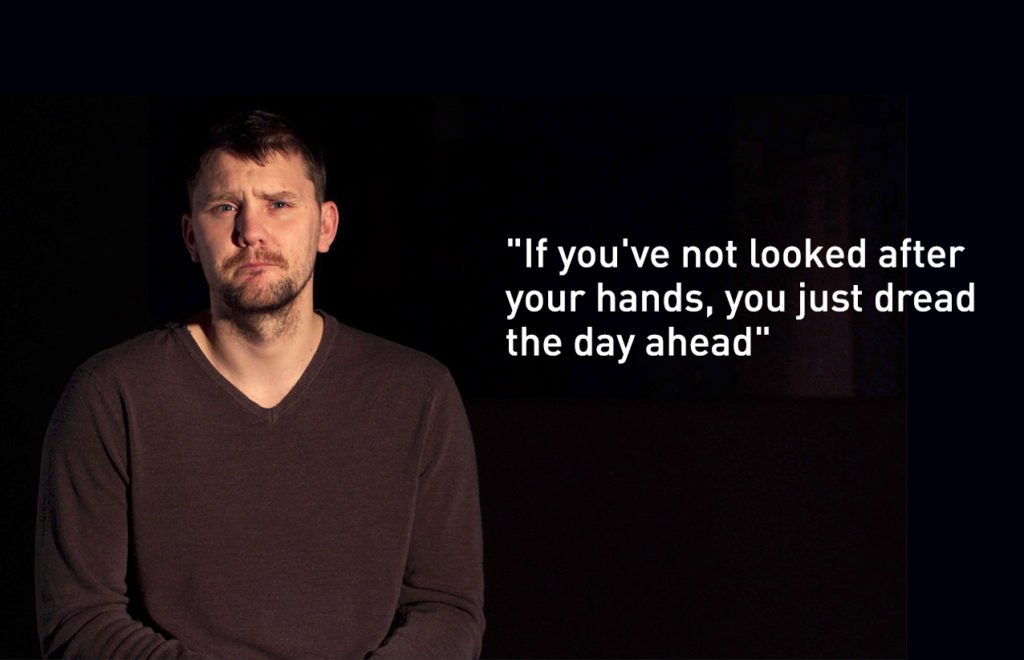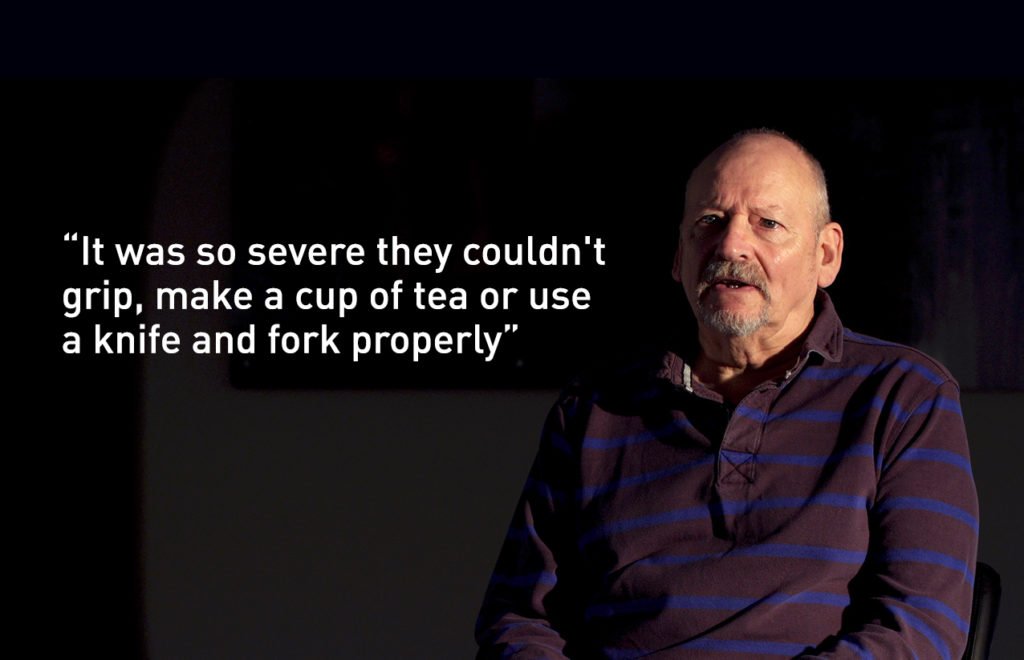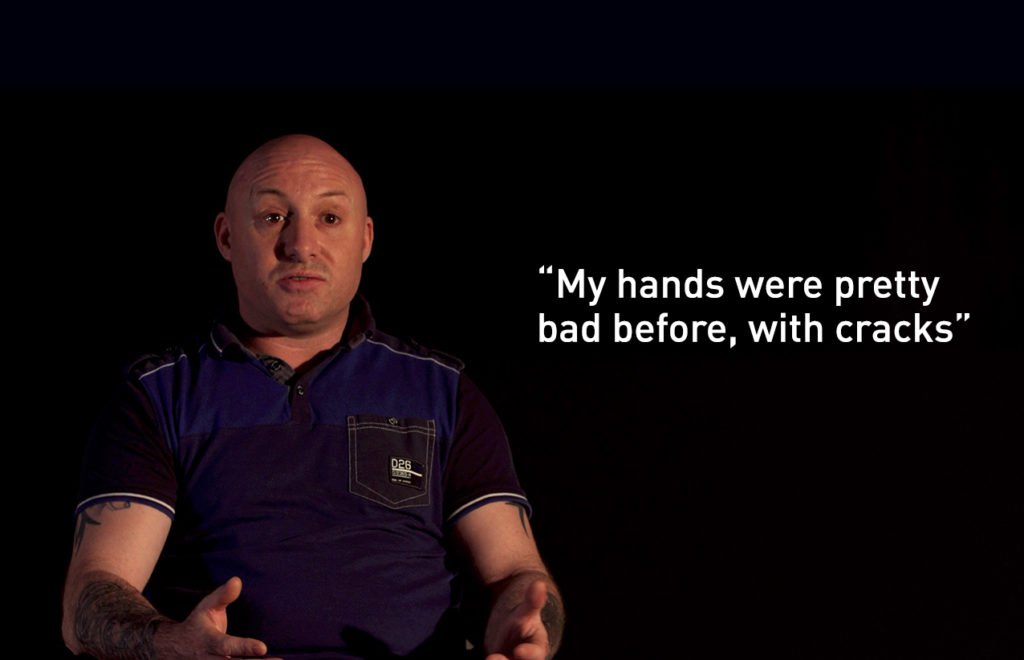Paul Jakeway highlights the risks employees face at work each day by understanding the experiences of industrial workers, and explains why encouraging them to speak out about the health of their skin is critical.
Occupational Skin Disorders (OSD) are the second most common work-related health problem in Europe , with up to 40% of workers suffering from a skin issue at some point in their working life . But there is often a lack of dialogue on the issue of occupational skin health.
In fact, the problem is worse than you might think — it is possible that the incidence of OSDs may be underestimated by 10 to 50 times . And this can only be changed by helping employees to speak out about their skin health.
This often invisible topic needs to be made visible. It is critical that workers share their perspectives with Health & Safety Managers so that its importance can be realised, and that’s why we talked to a range of employees from different professions to understand their experiences with skin health and OSDs.
Skin health matters – don’t leave it too late
 Many workers fail to realise that skin health is important until it is too late. But that is changing slowly, as Lee, a 27-year-old bricklayer, knows from the poor health of his father’s hands.
Many workers fail to realise that skin health is important until it is too late. But that is changing slowly, as Lee, a 27-year-old bricklayer, knows from the poor health of his father’s hands.
“When your hands are sore or cracked, you can’t grip as tight because that’s when the most pain comes,” Lee says. “If you haven’t looked after your hands anyway, you just dread the day ahead to be fair. Creams are available onsite, but not many people use them. They’re more of an afterthought.”
“It is not until later in life that you find out how detrimental a work-related skin problem can be,” he explains. “I definitely wouldn’t want my children to have the same type of hands as what my father has. Improving our skin health at an earlier age is massively important.”
Avoiding the consequences of OSDs
 Employees often overlook the longer-term consequences of poor skin health. And this ties into the issue of workers ignoring the skin care provisions available to them in the workplace. Geoff, a 65-year-old printer, knows more than most about the effect OSDs can have on workers when this happens.
Employees often overlook the longer-term consequences of poor skin health. And this ties into the issue of workers ignoring the skin care provisions available to them in the workplace. Geoff, a 65-year-old printer, knows more than most about the effect OSDs can have on workers when this happens.
“Working in a packaging factory, we print around 20,000 boxes a day,” says Geoff. “I have heard of people suffering from skin problems at work due to working with chemicals — especially oils. There are a lot of risks.”
“I should use moisturising creams,” he continues. “I don’t because I find them very difficult. They take a long time to be absorbed into the skin, and they leave your fingers greasy.”
Geoff is quite clear on the impact OSDs can have on workers, involving “time off work and loss of earnings, so that affects the families of the workers. It can affect you mentally, as well.
I’ve seen some skin disorders where your hands crack and it’s seriously demoralising. It was so severe they couldn’t grip. Not being able to make a cup of tea, not being able to hold a knife and fork properly — all these things affect the mental state of someone.”
Education a crucial part of skin health

More education is needed in the workplace to help employees understand the risks they face and how to avoid them.
Many, like Jason, a 41-year-old labourer, realise that the equipment they have can be part of the problem — and that they need more help to protect their skin health.
“We do wear proper protective gloves for handling glass and stuff like that, so your hands tend to sweat a bit,” Jason says. “My hands are pretty bad with cracks — especially in winter. When my wife sees my hands, she tells me to put moisturiser on, but I’ll be rubbing it in for ages, so I don’t tend to bother, you know?”
On the subject of education about skin health, Jason says “There’s not a lot out there about skin conditions and hands. There’s a lot more that can be done.”
What is being done in the workplace?
It is clear there is a need for more training in the workplace. Health and safety talks are often given, but focus on the more obvious risks to employee health such as falls from height or respiratory disease — ignoring the importance of skin health.
While skin care provisions are often in place to prevent OSDs, most employees do not receive the corresponding training on why, how and when these creams should be used. That is why all Health & Safety Managers are encouraged to introduce an effective 3-step programme for skin care that includes products that protect, cleanse and restore the skin – as well as specific training on how and when to use each product, in the form of toolbox talks.
Before work, employees should apply a protective cream to reduce contact with potential contaminants and irritants, while improving comfort and skin strength when wearing gloves. People should also use the appropriate cleansers after their hands become contaminated, as well as a restorative cream at the end of the working day — moisturising, nourishing and conditioning the skin to prevent it from becoming dry and damaged.
Professional protect and restore creams offer real benefits to workers. They can be specific to the type of work, the contaminants in each workplace, and the skin condition of the workers themselves – in addition to being fast absorbing and non-greasy.
Employers are advised to combine these steps with effective (and regular) training on the above skin care programme, how to spot a work-related skin problem, and the steps to take after identifying one.
Whether you are an employee about to embark on your first job, you are approaching retirement, or anything in between, it is crucial to understand that your hands will matter now, and throughout your entire life. With employees speaking out, we hope that lessons can be learnt about the protection of skin, and that the cycle of poor skin health can be broken.
Paul Jakeway is marketing director at skin care expert Deb
What makes us susceptible to burnout?
In this episode of the Safety & Health Podcast, ‘Burnout, stress and being human’, Heather Beach is joined by Stacy Thomson to discuss burnout, perfectionism and how to deal with burnout as an individual, as management and as an organisation.
We provide an insight on how to tackle burnout and why mental health is such a taboo subject, particularly in the workplace.




